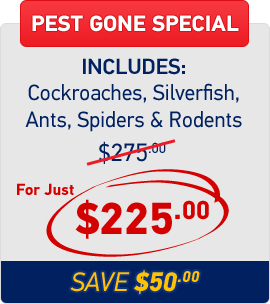Watch this video and call the experts in termites
Common Termites Species – Termites Barriers – Termite Treatments– Termite Inspections
There are over 300 species of termites in Australia, which are generally grouped according to their feeding behaviour. The commonly used general groupings are subterranean, soil-feeding, dry wood, damp wood and grass eating. Of these, subterranean and dry woods are primarily responsible for damage to human-made structures.
Technicians should be able to recognise the main pest species with the aid of a hand lens, but the accurate identification of termites is best done by an entomologist specialising in termites.
For the identification of termite species, the soldier caste has the most obvious characteristics.
Several families of the Epifamily Termitoidae are represented in Australia. The most primitive (oldest in evolutionary terms) is the giant northern termite, Mastotermes darwiniensis.
The families and species most often encountered by a pest technician are listed in the table below.
Family Genus Species
Mastotermitidae Mastotermes darwiniensis
Kalotermitidae Cryptotermes Cryptotermes brevis (introduced)
Cryptotermes spp. (native)
Neotermes Neotermes insularis
Termopsidae Porotermitnae Porotermes adamsoni
Rhinotermitidae Copotermitinae Coptotermes acinaciformis
Coptotermes frenchi
Coptotermes lacteus
Coptotermes michaelseni
Coptotermes raffrayi
Heterotermitinae Heterotermes ferox
Schedorhinotermes Schedorhinotermes intermedius
Moisture and Temperature
Termites possess narrow cuticles and are thus vulnerable to desiccation. A large part of their life cycle is spent in the high moisture and temperature environments inside their working areas and colony. The main area in a colony of subterranean termites has a relative humidity of roughly 100 per cent. Termite workers and soldiers could move away from the safety of their working area in the colony, perhaps to look for food, once the external humidity reaches near 100 per cent.
In structures where there are air-conditioning ducts, they have been seen going to and fro across the floors, as a result of being pushed out of the ducts while the air-conditioning was running.
Subterranean termites get moisture from soil for the most, allowing them keep the humidity in the colony. In addition, they utilise moisture evaporation to lower the colony’s temperature. Though subterranean termite colonies are able to survive with no soil contact, they need a steady source of moisture.
When there is termite infestation on a building’s topmost floors that have no contract with the ground, the water source is typically a plumbing leak or faulty drainage from the roof.
An external water supply is not essential for drywood termites as they get their water from damp wood or timber. They feed on timbers, especially with stable moisture content. Thus, the prevalence is higher in tropical areas where the humidity and temperature are elevated.
Food
Most species are grass and debris feeders, and are not usually pests of buildings.
Termites of economic importance to wooden buildings eat cellulose, starches and sugars (carbohydrates) that they obtain from wood. The sapwood of timber in service is preferred by termites to heartwood because it has a better food value and is less durable. The heartwood of some tree species contains toxins, which make the species resistant to termites.
For termite control in Brisbane , we coveriall suburbs. We also serve Ipswich – Gold Coast – Sunshine Coast
CONTACT US
address here suburb
QLD postcode Australia
(07) 3245 5126
Email: [email protected]
Find us on Google









































Recent Posts
Brisbane Carpet Cleaning & Pest Control
We use powerful truck mounted machines our carpet cleaning is guaranteed and safe from Brisbane to Ipswich. We are professional and courteous carpet cleaners and we service all suburbs.(07) 3245 5126
Call today for all specials and combined services. We have the best residential or commercial carpet cleaning service deals and prices, so why overpay for quality. From carpet stains and dirt removal, dust mites treatment through to full house cleaning we have got you covered.

